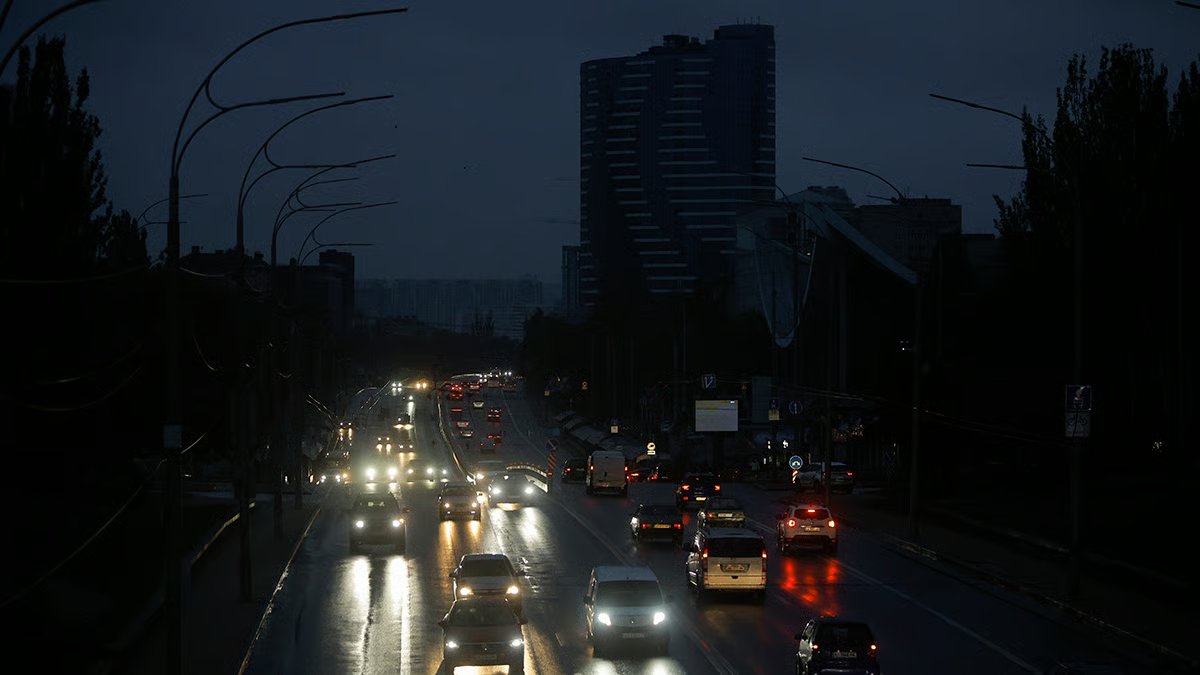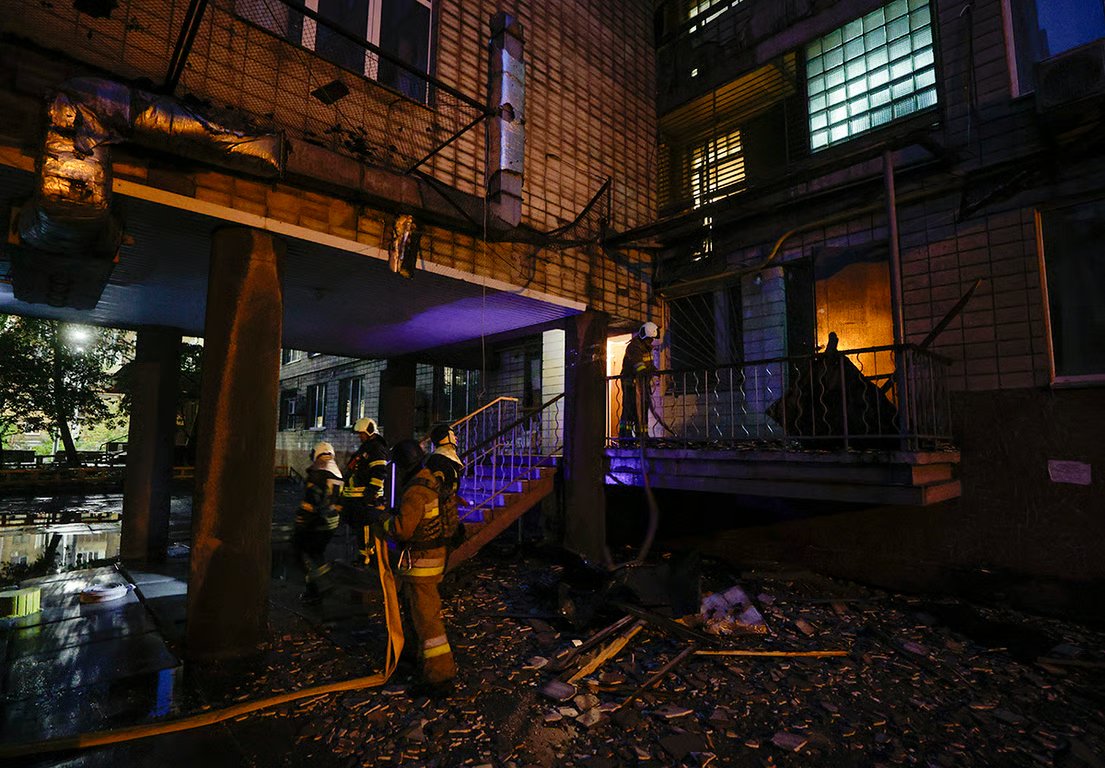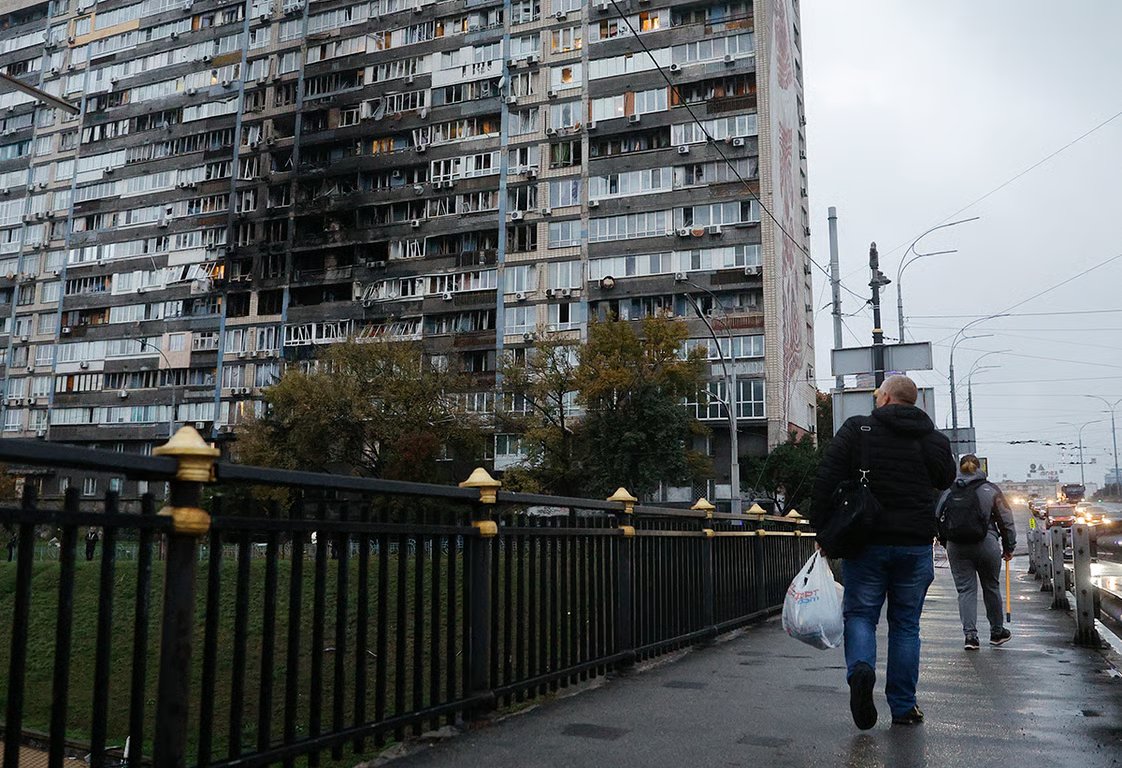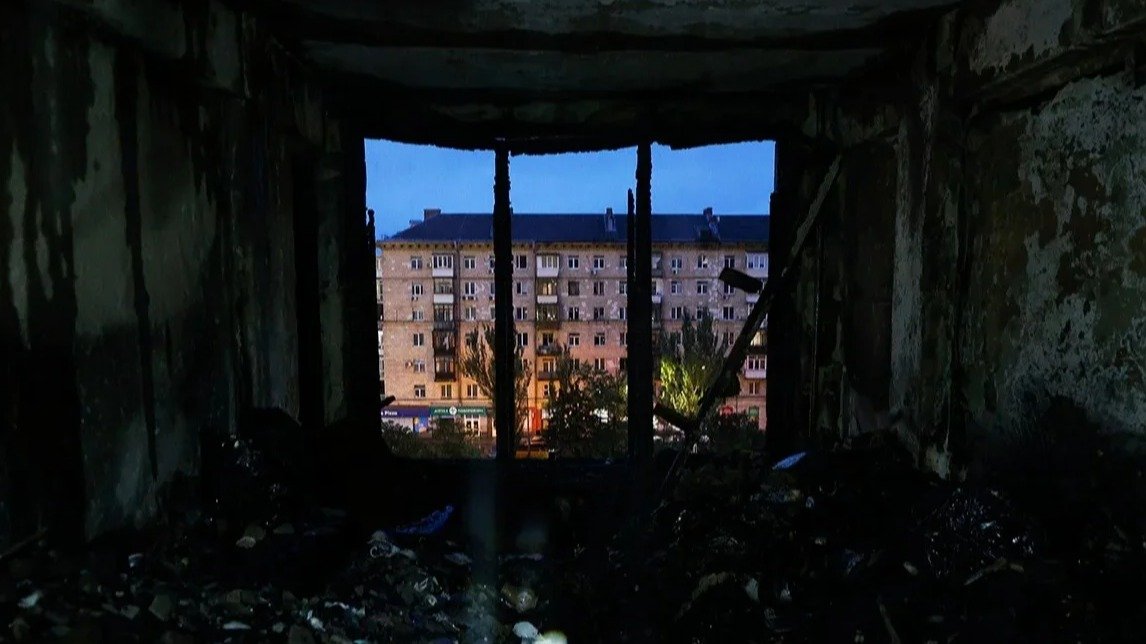The first thing I did when I began writing about Kyiv’s preparation for another winter of war was to take an inventory of the basic purchases I’d made since the spring of 2022. Kyiv may be much calmer than Kharkiv, Sumy or Kherson, but it still makes sense to be prepared for attacks. So I laid out all the things I’d need to live and work comfortably in the living room.
A torch with a USB port with multiple modes, from dazzling beam to something more subtle, is indispensable if you want to avoid breaking your neck on the long winter nights in Kyiv when there is no street lighting. This is much more practical than lighting the way with your smartphone.
You’ll need a headlamp too, similar to the one worn by miners. Mine also has a USB port so you can charge it from a power bank or a laptop. Most importantly, they leave your hands free, which is especially important at night for mothers with children if they have to run to a shelter, car park or metro station to avoid shelling.
Reflective tape with a layer of Velcro is another must-have. Ideally you’ll attach a few pieces to your bag and to your clothing from head to toe. Drivers say it makes life much easier as they can see pedestrians at a crossing from afar.

A street is plunged into darkness after Russian airstrikes on Kyiv, Ukraine, 10 October 2025. Photo: Sergey Dolzhenko / EPA
Powerbanks are another staple. The more you have, the better. Use them to charge phones but also small lights with USB ports, which people put up around their apartments to create a semblance of normal evening lighting.
Like many others, I find that after sitting in pitch darkness on long winter evenings — the light off your mobile screen doesn’t count! — your eyes start to hurt and melancholy kicks in. Until I figured out these better options, I’d use a bunch of Chinese-made Christmas tree lights and some flimsy table lamps.
On nights you spend in a bomb shelter, usually a metro station or a car park, you’ll need a sleeping bag, a mattress or a fold-out bed.
An optional extra is a portable battery-operated radio. If your internet connection goes down, and you can’t read news on your phone or ask friends on Facebook, these relics really come into their own.
I also make sure I have two or three thick Ukrainian-made tracksuits with hoods. At times like these, it is vitally important to support domestic manufacturers, and I suggest you err on the larger side when picking them out, as having enough room for a sweater and trousers underneath is a good idea. On nights when there is no Russian shelling but the central heating remains off due to a Russian missile strike, people often sleep dressed like this at home. However, on nights you spend in a bomb shelter, usually a metro station or a car park, you’ll need a sleeping bag, a mattress or a fold-out bed.

Ukrainian rescue workers at the site of a Russian airstrike on Kyiv, Ukraine, 10 October
2025. Photo: Sergey Dolzhenko / EPA
But why not one tracksuit? When infrastructure comes under fire, as a rule, water is the first thing to go, so you can’t wash things as often as you’d like. In Kyiv, there’s no problem buying bottled water, but you should always have two large plastic buckets, with lids on, full of water at home just in case. Better still, get a 35-litre plastic tank, if you have space in your bathroom.
When it comes to electricity, setting up a generator at the dacha can provide you with a little slice of paradise, war permitting. Those who live in apartments aren’t so lucky, and fire-fighters strongly advise against installing generators on your balcony. In some high-rise complexes, the building management has purchased a powerful generator to ensure that the elevators will work and that there is light until the curfew and blackout come.
But I never imagined losing electricity and heating at the same time. Now, as we approach the four-year mark since Russia invaded, we have a much better idea of how to get through the winter in a worst-case scenario.
As for things I have in reserve but which I have not had to use — superstition stops me writing “yet” — a black plastic case with a portable gas burner and gas canister. We have a gas stove at home, and, touch wood, domestic gas consumers in Kyiv haven’t had a problem so far. But gas canisters are now a lifesaver for people in the capital with electric ovens.
I also have two as yet unopened bags with electric sheets and electric blankets. I first realised that my block of flats in one of the most heavily bombarded areas of the capital could easily be left without heating during the winter back in 2022 and went shopping. But I never imagined losing electricity and heating at the same time. Now, as we approach the four-year mark since Russia invaded, we have a much better idea of how to get through the winter in a worst-case scenario.
Moving from the private to the more general, a word on what the state is doing to protect people’s lives and the country’s economy as we approach another winter that will be made as difficult as possible for us by Russia.
The Kyiv Digital app lets city residents know what’s going on during airstrikes and updates a detailed interactive map showing the location of some 400 phone charging points in different parts of the capital, as well as places where you can drink hot tea and stay warm. Though the height of winter is still some way off, it’s a good idea to avoid the cold and rain. There are at least three such points near my home.
It’s rare for there to be a night without air-raid sirens, which continue to sound well into the morning
A second map shows the city’s pump rooms, which work even when the electricity goes off as they have their own generators. The third map, which is constantly updated, shows air-raid shelters.
Drones and missiles have been relentless in the last weeks and months. It’s rare for there to be a night without air-raid sirens, which continue to sound well into the morning when public transport is starting, shops are opening, and children are on their way to school.

A residential building destroyed in a Russian airstrike, Kyiv, Ukraine, 10 October 2025. Photo: Sergey Dolzhenko / EPA
The attack on 10 October is already seen as one of the worst on the country’s energy sector, with the Ukrainian Air Force saying Russia launched 32 missiles and 465 drones on a single night, making their intentions clear by taking out energy facilities just as the weather turns cold.
The entire left bank of the capital was left without electricity or water, and the metro network could only partially operate in certain sections. In the absence of metro connections between the right and left banks, buses, minibuses and taxis crawled over bridges in traffic jams.
On 3 October alone, Ukraine reportedly lost about 60% of its gas production capacity due to massive Russian airstrikes on the Kharkiv and Poltava regions.
Ukrainian energy company DTEK made it crystal clear how serious the electricity situation was, writing on their official Facebook page: “Russia has attacked DTEK’s thermal power plants. The equipment is severely damaged. We are dealing with the consequences.”
Local media then established that Kyiv’s combined heat and power plant (CHPP), which generates both electricity and heat for central heating and the hot water supply, had also come under attack. The city had only just turned on the heating in hospitals, schools and kindergartens. Engineers began repairs as soon as the attacks stopped.
Workers take cover during air raid alarms in Kyiv, Ukraine, 10 October 2025. Photo: EPA/SERGEY DOLZHENKO
That afternoon, DTEK reported: “270,000 Kyiv families have their electricity back after the shelling. The situation remains complex. We are working on it.” Some people expressed gratitude in the comments: “You heroes! You’re Titans!” But most were annoyed, demanding to know how much longer the repairs would take, to which the company answered: “The damage is very serious, and we are prioritising supply to critical infrastructure facilities. The repair teams are working overtime.”
Could the consequences of the 10 October attack have been avoided in Kyiv? How well did the local authorities prepare for the obvious Russian attempts to leave residents of the capital without heating and power as winter got underway?
Experts predict a very difficult winter ahead for Ukrainians, though that is now the norm. This is the fourth winter of this full-scale war which has preemptively been called fatal.
Not well enough, says Oleksiy Kucherenko, a deputy in Ukraine’s parliament and a former minister for housing and utilities. Kucherenko told Ukrainian online outlet Telegraf that insufficiently protected transformers had been damaged, and blamed the city authorities. While the 10 October attack was undoubtedly huge, air defence systems did their best to defend the city, Kucherenko says, adding that the same could not be said for protecting the transformers at the CHPP.
On 3 October alone, Ukraine reportedly lost about 60% of its gas production capacity due to massive Russian airstrikes on the Kharkiv and Poltava regions. If that is confirmed, experts predict a very difficult winter ahead for Ukrainians, though that is now the norm. This is the fourth winter of this full-scale war which has preemptively been called fatal.

